Many people face a diagnosis of osteochondosis of the lumbar region.Symptoms of this disease: constant pain in the lower back, as well as limited movements, loss of sensitivity and so on.In any case, it should be understood that this disease in the absence of treatment can lead to a mass of neurological complications.So what is the disease?What are his first signs?What treatment methods does modern medicine offer?This information will be useful to each reader.
What is osteochondrosis?
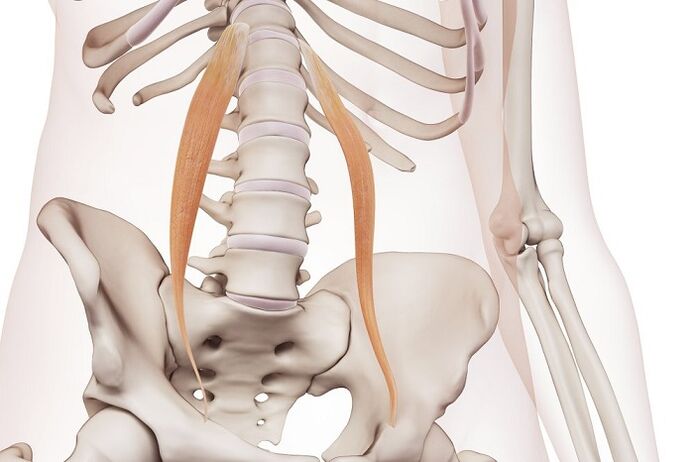
Osteocondrosis is a chronically progressive disease that is accompanied by the degeneration of the connective and bone tissues of the spine.The process of pathological changes in the tissues begins in the intervertebral disc.This structure consists of a fibrous ring, within which there is a core similar to the gel.
As a result of a violation of normal metabolism, a gradual drying of the nucleus occurs.Together with this, changes are also observed in the fibrous ring: tears and cracks are formed in the tissues, following which the nucleus can go further.A similar process affects the state of the vertebrates, because the vertebrae must resist heavy loads.Therefore, not only intervertebral discs, but also the vertebrae, ligaments and intervertebral joints are involved in the process.
As a rule, the disease begins in adulthood or old age, although there are cases where the disease has been diagnosed in teenagers.By the way, lumbar osteochondrosis is the most common form of this disease.
The causes of the development of the disease
This pathology develops with a violation of normal metabolism and the presence of an increase in physical effort.It is worth noting that the degenerative process, as a rule, is launched under the influence of several factors simultaneously.To date, lumbar osteochondrosis is considered a multifactorial disease.Here are only the most common causes of degeneration.
- First of all, a hereditary predisposition should be noted.The cause may be some of the congenital anatomical characteristics of the skeleton and metabolic disorders, such as the wrong metabolism of glycoproteins.
- The risk factors include the flat feet, since with this pathology there is a redistribution of the normal load on the spine.
- In some cases, osteochondosis develops against the background of spinal lesions.
- Static loads can also be attributed to risk factors.For example, longtime or staying in an uncomfortable position.
- Physical tension can also start a degenerative process, especially when it comes to professional athletes.
- Often the process develops in obese people, since the spine, as well as the entire skeleton, lends itself to an increase in loads.
Gravity of lumbar osteochondosis
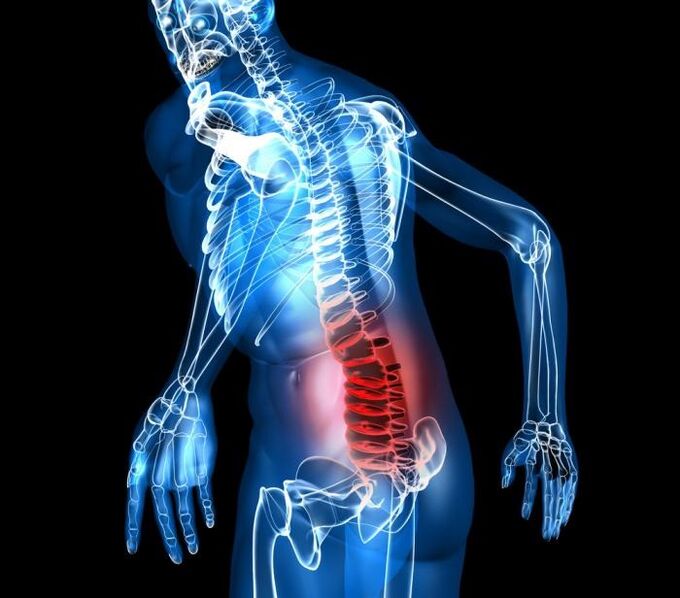
This disease gradually develops.To date, it is customary to distinguish four main degrees of osteochondosis of the lumbar region (some doctors emit three).
- In the first phase, there is a gradual change and a movement of the nucleus of the jacket inside the intervertebral disc.
- The lumbar osteochondosis of the 2nd degree is characterized by the destruction of the fibrous ring.
- In the third phase, as a rule, there is a breakdown of the fibrous ring, due to which the gelatinous core goes beyond its limits, therefore the hernia of the intervertebral disc is formed.
- The fourth phase of the disease is accompanied by the degeneration of the vertebrae, ligaments and joints, following which spondularosis develops.
Osteochondosis of the lumbar: symptoms and description of the first stage of the disease
This phase of the disease is accompanied by the irritation of the nerve fibers, which are found in the Inter -Duster ligaments and a fibrous ring.Therefore, the first sign of this disease is discomfort, rigidity and pain in the lumbar region.It is worth noting that the pain can be hard and shoot (in medicine this symptom is called "lumbago") or, on the contrary, stupid, but constant (low back pain).
It is worth noting that due to the irritation of nerve endings, the pain can also be extended to other tissues, organs or even organ systems.For example, in the event of violation of normal trophism and blood circulation in ligaments and tendons, the appearance of the Enteopathies so calls in which connective tissues change and compact in the places of fixing to the bones can occur.
Since quite often in patients, lumbosacral osteochondosis is diagnosed, pain can apply to the lower spine and even give the lower limb.The compression of nerve endings and small ships leads to the development of violations in the tissues of the lower limbs.
The second degree of osteochondosis and its signs
In this phase some other signs of osteochondosis of the lumbar region appear.The appearance of a certain instability between the vertebrates is observed, following which the mobility of the vertebrae increases.
In turn, such a change leads to the persistent and almost constant tension of the muscles of the lower back.Patients complain not only of pain and discomfort, but also of constant muscle fatigue.
Clinical picture with the third degree of illness
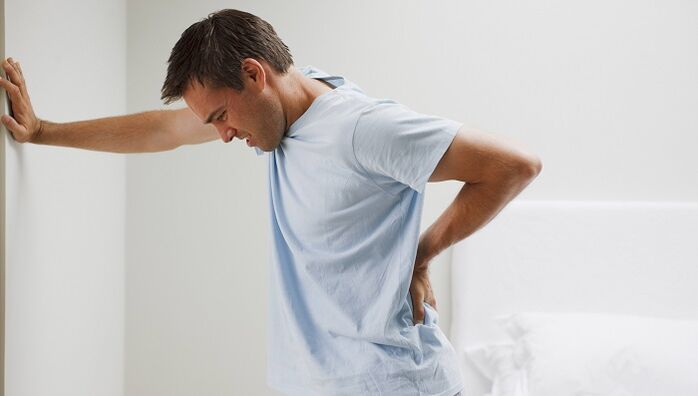
Which signs in this case are accompanied by the osteochondosis of the lumbar?The symptoms during this period can be different.The fact is that the damaged intervertebral discs begin to squeeze the nerve roots, which are accompanied by the so "root syndromes" called.
At the same time, patients interrupt the sensitivity of those areas innervated by a compressed nerve.As a rule, at the beginning there is a slight numbness and tingling, but in the absence of treatment, a complete loss of sensitivity can occur.This is often accompanied by a deterioration of motor activity, by the gradual atrophy of the muscles and sometimes the complete paralysis.
By the way, based on the location of these changes, we can suppose which vertebrae are affected by the disease.For example, if the change or loss of sensitivity is observed in the heel and the pain gives to the kint muscle, the patient is likely to have lumbosacral osteochondosis.
In some patients, the so -called "horse tail syndrome" is observed, which is associated with the compression of the beam of roots, which takes place in the lumbar and sacred section of the spine.This condition is characterized by a violation of the motor function of the legs, as well as by various disorders of the pelvic organs.
Lampo osteochondrosis: symptoms of the fourth stadium
At this stage, all the joints and intervertebral ligaments are already involved in the process.In addition, there is a fibrosis of the intervertebral disc, in which all its elements are replaced by a dense scar fabric.
By the way, at this moment, patients of patients can improve.But the mobility of the spine, of the lower back and legs is very limited.
Modern diagnostic methods
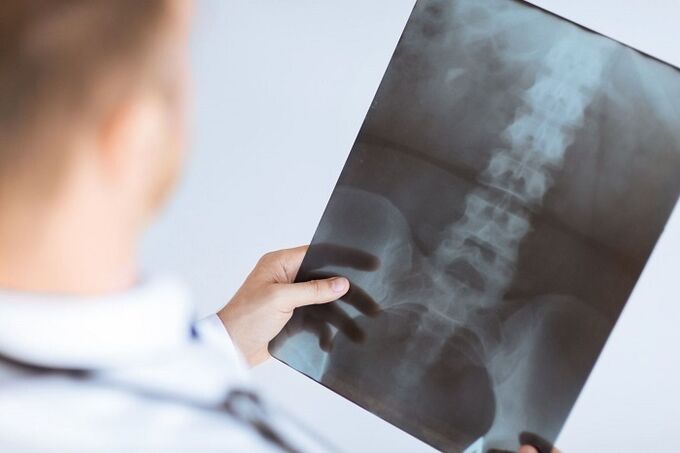
In the presence of constant pain and discomfort in the lower back, you need to consult a doctor.Only a specialist can determine the lumbar osteochondosis of the spine.In this case, the diagnosis includes several phases.
To begin with, the doctor will carry out a general examination, will check the reflections, the presence of root syndromes, as well as the degree of mobility and so on.It is necessary to collect a complete story, since in this case it is important not only to make a diagnosis, but also to determine the cause of the development of a degenerative process.
In this case, diagnosis laboratory methods are not much importance.Therefore, the patient is mainly directed to the radiography of the spine.The X -ray images allow you to see the narrowing of the intervertebral crack, as well as determining the presence of bone growths and seals on the surface of the vertebra.
For a more accurate evaluation of the patient's conditions, magnetic resonance imaging and computerized tomography are also conducted, these studies give a clearer picture of degenerative changes in the spine.
What complications is the disease associated with?
In no case this disease should perceive this frivolous disease.In the absence of timely therapy, the patient will face not only pain and limitation of mobility, but also with more serious consequences.
In particular, the degeneration of the intervertebral records leads to the formation of an hernia.In addition, the compression of the nerve roots affects the work of many organs, including urinary, sexual and sometimes digestive systems.In some cases, the disease leads to the complete paralysis of the lower ends and musclerophy.Changes in osteochdrosis are practically irreversible, so it is extremely important to start therapy in time.
Pharmacological treatment of osteochondrosis
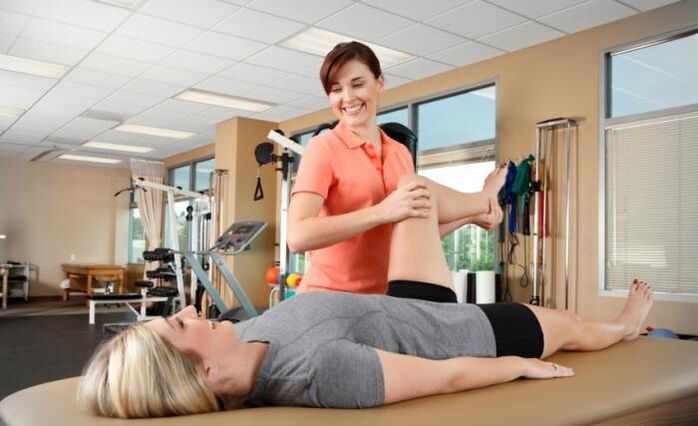
Only the doctor knows how to treat lumbar osteochondrosis.With such a disease, therapy is selected individually, as it depends on many factors, including the individual characteristics of the patient's body.In any case, it should be understood that the treatment of osteocondrosis is a long and complex process.
Of course, patients are prescribed for some drugs.Very often, this disease is used below.
- In the initial phases for treatment, chondroprotectors are used - drugs that inhibit the process of degeneration of the cartridge fabric.
- In the second phase, the treatment of lumbosacral osteochondrosis may include the use of anti -inflammatory drugs that eliminate pain and inflammatory process.
- Muscle spasm is eliminated with muscle relaxants.
- Local anesthetics are used for severe pain.For example, the pain is blocked with paintings injections.
- The older patients are recommended to take multivitamin complexes.
- Therapy also includes vasodilant drugs that improve blood circulation and tissue trophic.
Other methods of conservative treatment
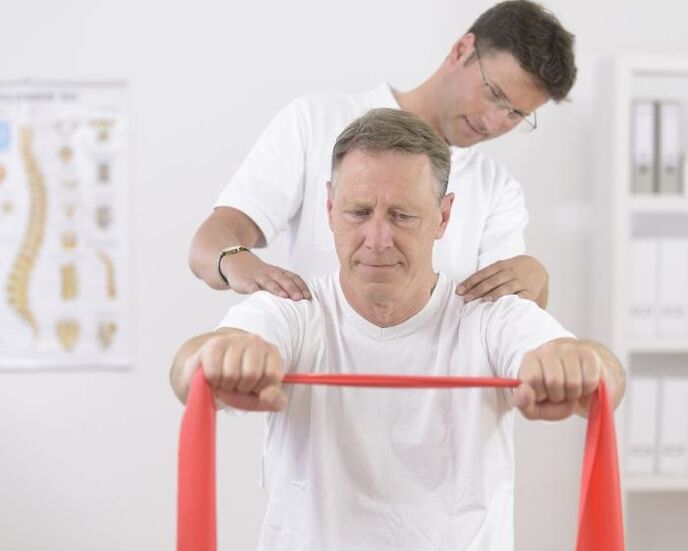
Of course, it is impossible to get rid of the disease with the help of only drugs.The treatment of lumbosacral osteochondrosis includes other measures.In particular, a therapeutic massage gives a positive effect.Regular sessions help to eliminate muscle spasm and improve blood circulation in tissues.
Gymnastics with lumbar osteochondrosis is extremely important.The set of exercises is selected by the attending physician or physiotherapist.Physical education helps to restore mobility, improve blood circulation, eliminate pain.Of course, lessons should be regular.On the other hand, in the presence of acute pain, physical activity is contraindicated, during this period the patient needs resting in rigorous bed and wearing a special corset, which relieves the load from the spine.
In addition, some physiotherapy methods are also used.In particular, ultraviolet radiation are considered rather effective (eliminates spasm and pain), magnetotherapy, laser therapy, electrophoresis (help to relieve inflammation and pain), as well as the treatment of bathing.
When is the surgery necessary?

Unfortunately, not in all cases, conservative treatment is possible, especially if the patient has a diagnosis of intervertebral hernia.The indications for surgery are also the "bone tail" syndrome, as well as a serious compression of the nerve roots.
To date, there are many techniques for such operations.Very often, called microchirurgical procedures, as well as endoscopic, they are also performed to eliminate pressure on the blood vessels and nerves.



















